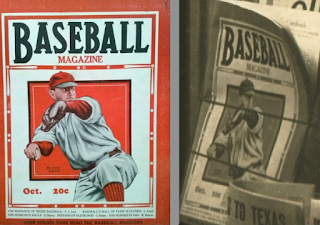Can anyone make a blog post which isn't political these days? To think a day would come (again…) when showing the Mexican people are just like us is necessary? Look. They had pin-ups just like we did! I am not surprised after the election, as we were given every indication the new choice of the Republican party was a horrid man. Still a whole lot of people voted against humanity, civil rights and equality. Still we should seriously work on fixing that. I don't pray much, but pray for the midterms. It might be our last chance.
I first wrote about and scanned some issues of Vea five years ago and have continued to pick them up when I can. So I am running the piece again below. Enjoy it. By the way, learn to get along with and appreciate everyone, will you? Jeez! Read these words and think about it this time. The United States is a nation of immigrants and what makes us special is that we care about everyone. Our culture, which is the greatest export we HAVE, wouldn't be what it is if we were not a melting pot.
VEA is a pretty hard magazine to find copies of these days. Vea
ran in the 1940s and 1950s, and when you figure in acid-based paper,
climate and censorship, you’ll know why they don’t turn up often. Do not
confuse it with Vea the Puerto Rican gossip magazine, or Vea which came
from Chile. Search hard and you will see a few issues on Fred
Seibert’s flickr stream, but that’s about it. I found a handful to
purchase recently, and I wish I had them all.
VEA was a weekly pulp periodical which ran for years but was
apparently often in trouble with the law, largely due to Niuglo’s spicy
muchachas. The magazine was a menudo of news, bullfighting reports,
pulp fiction (with illustrations that look like Charles Burns on peyote)
and breasts, which is where Nuiglo comes in. There is really nothing
to compare the magazine to in the states then or now, but it was similar
to the Folies De Paris et de Holllywood magazine from France which was
running the same time. Some of the Harrison mags like Whisper maybe.
Large format, large on style and striking today.
Flipping through them makes me think it is time for a 1950s Mexican
revival. The best reason to find some VEA is the pioneer Mexican
fashion and glamour photographer known only (but not known WELL) as
NIUGLO. Niuglo’s photos were so good they often graced front and back
cover simultaneous in vibrant candy colors, but the ones inside were
printed in burnt sienna brown. There was frontal nudity, a considerable
amount…but nothing below the waist.
Scarce and forgotten, but someone is paying attention. These are worthy of saving.
Bright scholar Ageeth Sluis recently wrote “Projecting Pornography and Mapping Modernity in Mexico City” for the Journal of Urban History which drew upon the images in VEA. A portion of the abstract reads: By analyzing depictions of female nudity as conversant with urban landscapes in the banned magazine Vea, the author argues that pornography connected Mexico City to transnational ideas of the early twentieth century that held that sexually liberated women were part and parcel of cosmopolitan modernity. Vea exemplified and fueled concerns over “public women” and helps scholars understand larger debates on the gendered effects of revolution, urbanization, and transnational currents of global modernity. NICE!
Bright scholar Ageeth Sluis recently wrote “Projecting Pornography and Mapping Modernity in Mexico City” for the Journal of Urban History which drew upon the images in VEA. A portion of the abstract reads: By analyzing depictions of female nudity as conversant with urban landscapes in the banned magazine Vea, the author argues that pornography connected Mexico City to transnational ideas of the early twentieth century that held that sexually liberated women were part and parcel of cosmopolitan modernity. Vea exemplified and fueled concerns over “public women” and helps scholars understand larger debates on the gendered effects of revolution, urbanization, and transnational currents of global modernity. NICE!
I’ve put in a note to Ms Sluis, and if additional information results I’ll be glad to add it.
Even better, an outstanding set of original negatives of erotic images which have been attributed to Niuglo
were discovered in 1996 and recently exhibited (in 2002) by photographer
Merrick Morton at the Fototeka Gallery in Los Angeles. Attributed might
be too strong a word, as it was speculation, and there were several
other “house” photographers doing the pinup photography for VEA.
Selected images of this cache were printed in editions and sold. The
certainly have the look, and they look wonderful.
Jim Linderman Books and Affordable Ebooks are available HERE



















































